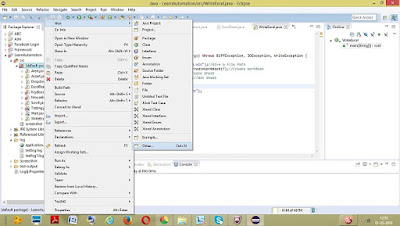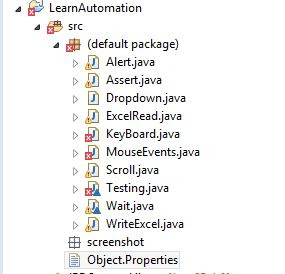Author : Ashwini Velapure (Test Automation Engineer) https://www.linkedin.com/in/ashwinivelapure
What is Automation Framework?
In simple words ,it
is nothing but structure of code.
While starting for
Automation Testing ,we need to have clear understanding for different types
of automation framework.
Types of Automation Framework:
- Linear FrameWork:
It is just
sequential code. Steps are collected one
by one. More hard coding of values is one of the drawback
of linear framework.
In selenium IDE, we
can record flow. If we extract testcase,We will get the java
code.You will get piece of code,which we can say linear automation
framework.
For example, if we
are automating Login application.Within linear frame work we will follow below
steps:
a) Open URL for
login page.
b) Enter the details.
c) Click on Login.
d) Verify the home page
b) Enter the details.
c) Click on Login.
d) Verify the home page
- Modular Framework
In modular
framework,there is dedicated doe for particular functionality, which can be
called as ‘Module’.
For achieving this modularity,
we are using JAVA,VB etc.
For example, if we
are automating Login application and we need to save screenshots.
Within Modular frame
work we will have separate module for
take Screenshot. This module will have code for taking screenshot and saving it
on desire location
Whenever we land on
page we will call take Screenshot module
Steps :
a)Load Login Page
b)Call take
Screenshot
c) Enter the
details.
d) Click on Login.
e) Call takes
Screenshot
- Data Driven Framework:
When an application
need to test with different set of data, Data driven Frame wok comes into
picture.
For example:
If we are automating
any login application and we need to check with different username and password.
In this scenario we can keep separate data sheet for username and password. Here we can use JXL/Apache POI
for reading data sheet
- Keyword Driven Framework:
It is similar data
driven. Here we are reading keyword from data sheet instead of test data. This
keyword may have one of the module associate with it.
- Hybrid Framework
Hybrid Framework is combination
of Data Driven framework and Modular Framework. This is commonly used
framework.
- TestNG Framework
This is advanced framework.
It is famous for its reporting feature. We had
already had discussion on the previous blogs
Why Automation
Framework?
Definite structure
of code is very important ,below are
some advantages:
- Reusability
- Maintainability
- Readability
- Scalability
How to select Type of Framework?
- Based on Complexity of Web Application
This complexity can
be determined by number of pages and
their web elements.
Also Number of
scenarios incorporated for particular web application workflows.
So, for less complex
application we can go with Data Driven FrameWork and for more complex
application we can Hybrid framework
- Based on Reporting requirement
Most of the Business
people are not bother with code sctructure.They are only interested in Output.
So, reporting comes
into the picture.TestNG framework gives
excellent reporting feature.
































